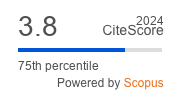Article | Open Access
Agent-Based Simulation of Long-Distance Travel: Strategies to Reduce CO2 Emissions from Passenger Aviation
| Views: | 3334 | | | Downloads: | 2101 |
Abstract: Every sector needs to minimize GHG emissions to limit climate change. Emissions from transport, however, have remained mostly unchanged over the past thirty years. In particular, air travel for short-haul flights is a significant contributor to transport emissions. This article identifies factors that influence the demand for domestic air travel. An agent-based model was implemented for domestic travel in Germany to test policies that could be implemented to reduce air travel and CO2 emissions. The agent-based long-distance travel demand model is composed of trip generation, destination choice, mode choice and CO2 emission modules. The travel demand model was estimated and calibrated with the German Household Travel Survey, including socio-demographic characteristics and area type. Long-distance trips were differentiated by trip type (daytrip, overnight trip), trip purpose (business, leisure, private) and mode (auto, air, long-distance rail and long-distance bus). Emission factors by mode were used to calculate CO2 emissions. Potential strategies and policies to reduce air travel demand and its CO2 emissions are tested using this model. An increase in airfares reduced the number of air trips and reduced transport emissions. Even stronger effects were found with a policy that restricts air travel to trips that are longer than a certain threshold distance. While such policies might be difficult to implement politically, restricting air travel has the potential to reduce total CO2 emissions from transport by 7.5%.
Keywords: aviation emissions; long distance travel; mode choice modelling; transport emissions; transport modelling
Supplementary Files:
Published:
© Alona Pukhova, Ana Tsui Moreno, Carlos Llorca, Wei-Chieh Huang, Rolf Moeckel. This is an open access article distributed under the terms of the Creative Commons Attribution 4.0 license (http://creativecommons.org/licenses/by/4.0), which permits any use, distribution, and reproduction of the work without further permission provided the original author(s) and source are credited.


